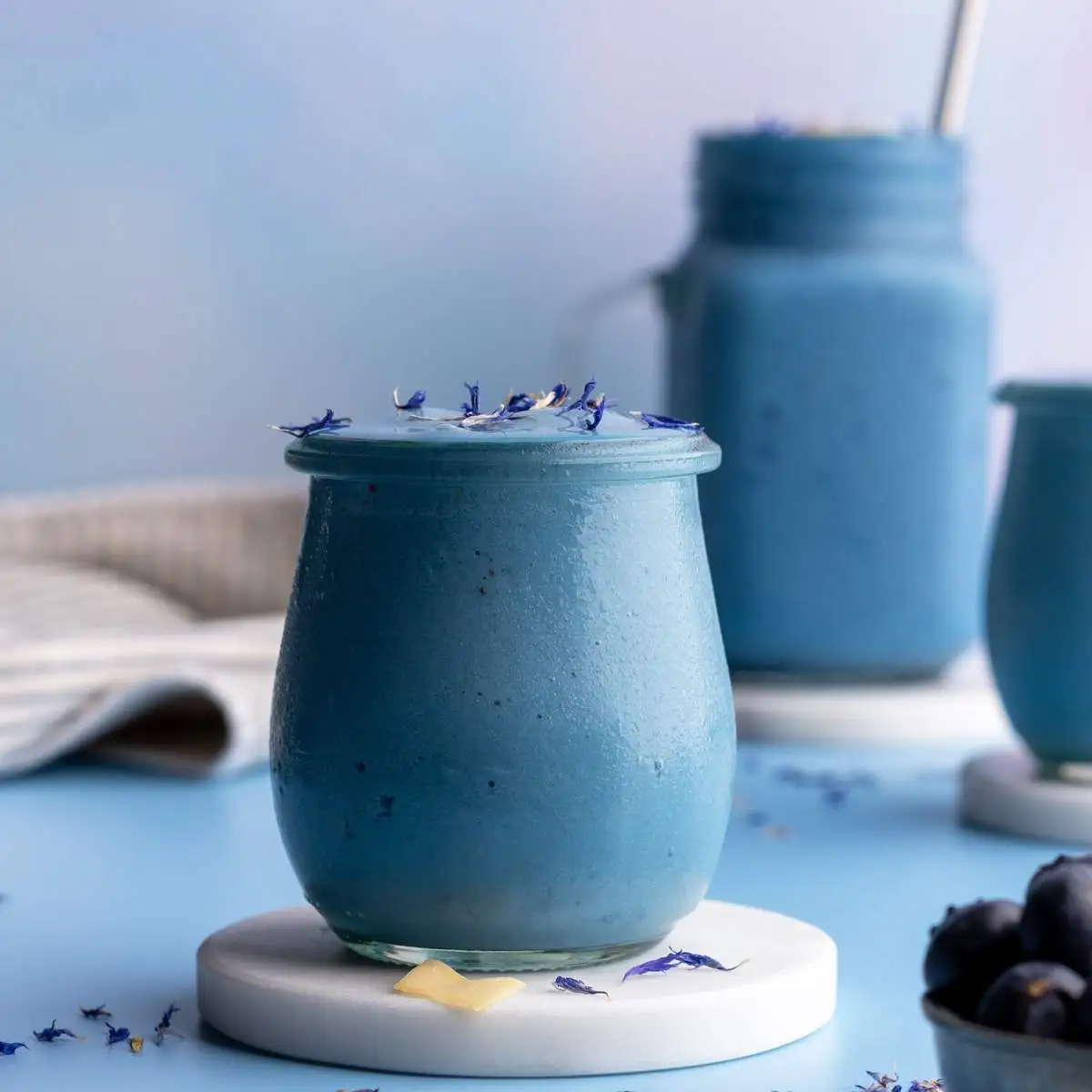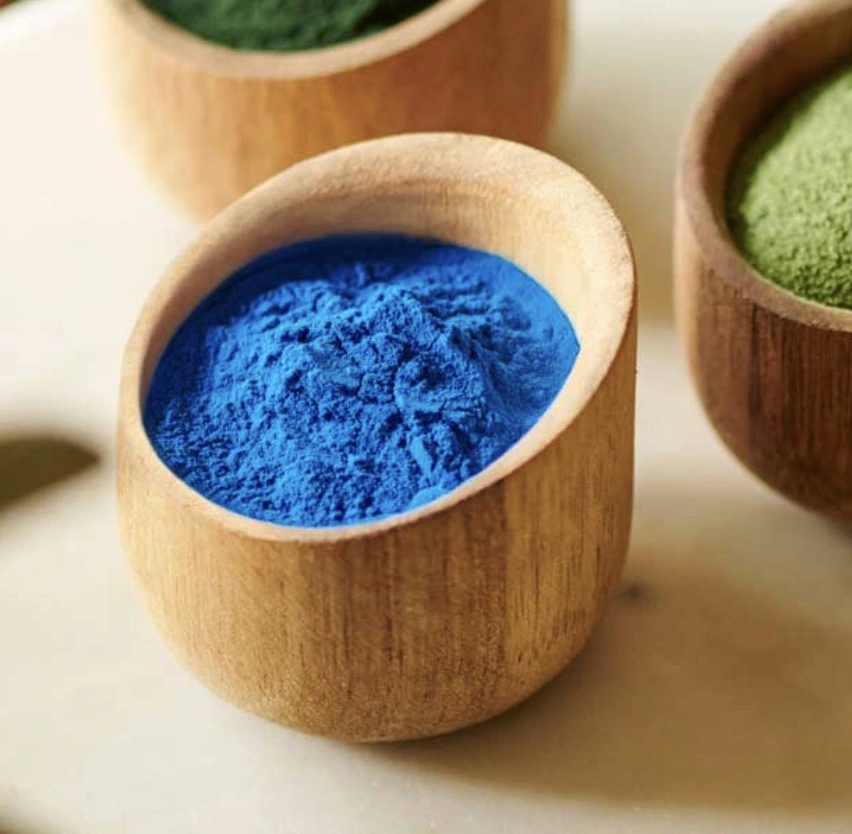Phycocyanin: Nature's Blue Food Coloring Revolution
In the ever-evolving world of food technology, a vibrant blue revolution is taking place. At the forefront of this colorful transformation is phycocyanin, a natural pigment derived from blue-green algae that's changing the game for food manufacturers and health-conscious consumers alike. This remarkable compound is not just a feast for the eyes; it's packed with nutritional benefits that are capturing the attention of the food industry and health enthusiasts worldwide.
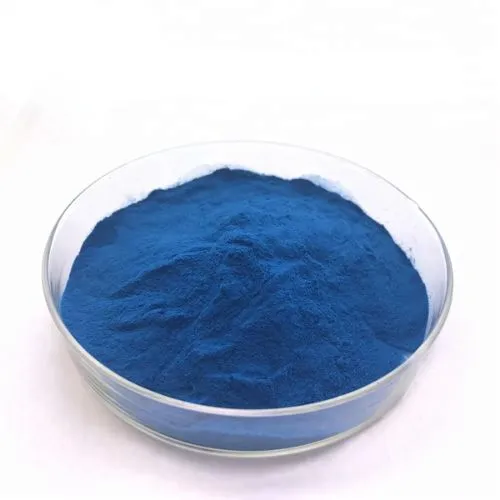
Why Phycocyanin Is the Future of Natural Colors?
As consumers become increasingly aware of what goes into their food, the demand for natural ingredients has skyrocketed. Phycocyanin stands out as a superior alternative to synthetic blue dyes, offering a clean label solution that aligns with modern dietary preferences.
The Rise of Clean Label Demands
Today's savvy consumers are scrutinizing ingredient lists more than ever before. They're seeking out products with recognizable, natural components and shying away from artificial additives. Phycocyanin, extracted from spirulina, a type of blue-green algae, fits perfectly into this clean label narrative. Its natural origin resonates with consumers looking for transparency and simplicity in their food choices.
Unmatched Versatility in Food Applications
One of phycocyanin's most compelling attributes is its versatility. This azure pigment can be incorporated into a wide array of food products, from beverages and confectionery to dairy and baked goods. Its ability to create stunning blue hues without compromising taste or texture makes it an invaluable tool for food designers and chefs aiming to create visually appealing dishes without artificial additives.
Health Benefits Beyond Color
Phycocyanin isn't just a pretty face in the world of food coloring. This powerhouse pigment boasts an impressive nutritional profile. Rich in antioxidants, phycocyanin has been linked to various health benefits, including anti-inflammatory properties and potential immune system support. As consumers increasingly seek out functional foods, the dual role of phycocyanin as both a colorant and a nutritional supplement gives it a significant edge over traditional synthetic dyes.
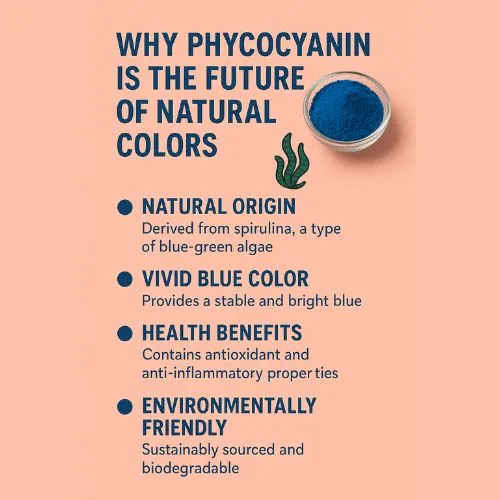
Top Food Applications Using Phycocyanin Extract
The food industry is embracing phycocyanin with open arms, finding innovative ways to incorporate this natural blue wonder into a variety of products. Let's explore some of the most exciting applications that are making waves in the market.
Vibrant Beverages
The beverage sector has been quick to adopt phycocyanin, using it to create eye-catching blue drinks that stand out on shelves. From sports drinks to fancy cocktails, phycocyanin is adding a splash of natural color that's both visually appealing and health-conscious. Smoothie bowls and health tonics are also benefiting from the addition of this blue algae extract, offering consumers a nutrient boost along with Instagram-worthy aesthetics.
Innovative Dairy Products
Dairy alternatives and traditional dairy products alike are getting a blue makeover with phycocyanin supplement. Blue-tinted yogurts, ice creams, and even cheeses are emerging as novelty items that appeal to adventurous eaters and health-conscious consumers. These products not only offer a unique visual experience but also tap into the functional food trend by incorporating the potential health benefits of phycocyanin.
Confectionery Creations
The confectionery industry is perhaps one of the most creative users of phycocyanin. From blue candies and lollipops to ethereal blue chocolates, confectioners are leveraging the natural blue hue to create treats that are as beautiful as they are delicious. The clean label appeal of phycocyanin is particularly valuable in this sector, where artificial colors have long been a concern for parents and health-conscious consumers.
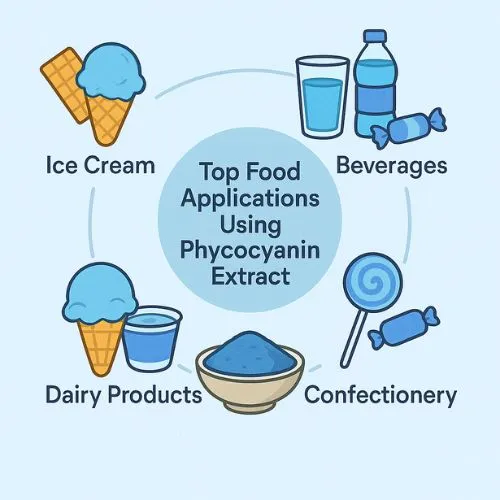
Is Phycocyanin Safe and Stable for Your Products?
As with any food additive, safety and stability are paramount concerns for manufacturers considering phycocyanin. The good news is that this natural blue pigment has a strong safety profile and can be quite stable under the right conditions.
Safety Profile and Regulatory Status
Phycocyanin has been recognized as safe for consumption by regulatory bodies worldwide. In the United States, it has received GRAS (Generally Recognized as Safe) status from the FDA, while in Europe, it's approved as a food coloring under the E number E18. These approvals come after rigorous testing and underscore the safety of phycocyanin for use in food products. However, as with any ingredient, it's crucial for manufacturers to source high-quality phycocyanin from reputable suppliers to ensure purity and safety.
Stability Considerations
While phycocyanin offers many advantages, it does require careful handling to maintain its vibrant blue color. The stability of phycocyanin can be affected by factors such as pH, temperature, and light exposure. In general, phycocyanin is most stable in neutral to slightly acidic conditions and at lower temperatures. Manufacturers need to consider these factors when incorporating phycocyanin into their products and may need to adjust formulations or packaging to protect the pigment's integrity.
Overcoming Challenges in Food Formulation
Despite its sensitivity to certain conditions, food scientists and manufacturers have developed various strategies to enhance the stability of phycocyanin in different applications. These include microencapsulation techniques, the use of antioxidants, and careful control of processing conditions. By addressing these challenges, the food industry is continually expanding the range of products that can successfully incorporate this natural blue colorant.
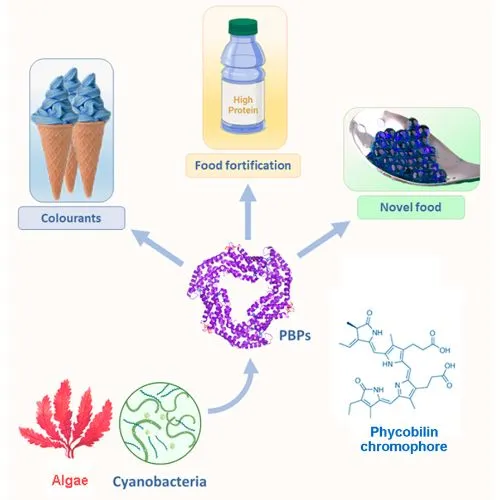
Conclusion
In conclusion, phycocyanin represents a significant leap forward in the world of natural food coloring. Its ability to provide a vibrant blue hue while offering potential health benefits makes it a valuable ingredient for food manufacturers looking to meet consumer demands for clean label products. As research continues and technology advances, we can expect to see even more innovative applications of this remarkable blue pigment from nature.
For more information on how phycocyanin supplement can revolutionize your food products, contact our experts at info@yanggebiotech.com. We're here to help you navigate the exciting world of natural food coloring and create products that are as healthy as they are beautiful.
FAQ
Q: Can we get some samples to test before purchasing?
A: Of course, we can provide free samples of 20 to 100 grams, but the shipping cost is at the customer's expense. The shipping cost can be deducted from the next order, or the samples can be sent through your courier account.
Q: Do your products have relevant certifications?
A: Yes, our products are certified for HALAL, ISO, HACCP, Kosher, and other certifications.
Q: What is the minimum order quantity (MOQ)?
A: Small batches of samples can be customized according to your requirements.
Q: Do you offer OEM and ODM services? Can the formula be customized based on our own?
A: Of course, we provide ODM and OEM services to many customers. Our product range includes softgels, capsules, tablets, sachets, granules, and private label services. Simply contact us and let us know your requirements. Our experienced R&D team can also develop new products with specific formulas.
Please contact us to design your own branded products.
Q: How do you handle quality complaints?
A: First, we have a comprehensive quality control SOP. We provide authoritative third-party inspection reports for almost all products before shipment to minimize the possibility of quality issues. Second, we have a comprehensive return and exchange procedure. If there is a genuine quality dispute, we will strictly follow the SOP.
Q: How do you ship? How long does delivery take?
A: For small orders, we typically use DHL, UPS, EMS, FedEx, or TNT. Delivery typically takes 3-7 days. We also offer air and sea freight services. We have a strong freight forwarding team and can provide you with a one-stop service, including DDP and DDU.
Q: What are your payment terms?
A: 100% prepayment, payable by T/T, Western Union, MoneyGram, or PayPal.
Q: What is the shelf life of your products?
A: 2 years with proper storage.
Q: Is the packaging environmentally friendly?
A: We attach great importance to environmental protection and are constantly improving our product packaging. Some products are packaged in recyclable paper. Packaging materials are carefully selected to ensure product safety during transportation and storage, and to minimize environmental impact. We are committed to achieving a balance between environmental friendliness and practicality in our product packaging, and to contributing to sustainable development.
References
1. Johnson, A. et al. (2022). "Phycocyanin: A Natural Blue Pigment with Promising Applications in Food Industry." Journal of Food Science and Technology, 59(3), 1021-1034.
2. Smith, B. and Jones, C. (2021). "Stability and Safety Assessment of Phycocyanin in Various Food Matrices." Food Chemistry, 345, 128758.
3. García-Vaquero, M. and Hayes, M. (2023). "Blue-Green Algae Derived Colorants: Current Status and Future Perspectives." Trends in Food Science & Technology, 131, 103-115.
4. Williams, R. et al. (2020). "Consumer Perceptions of Natural Food Colorants: A Focus on Phycocyanin." International Journal of Consumer Studies, 44(6), 585-597.
5. Lee, S. and Kim, H. (2022). "Innovative Applications of Phycocyanin in Functional Foods and Nutraceuticals." Critical Reviews in Food Science and Nutrition, 62(15), 4087-4102.
Based on your location and order quantity, you will have the opportunity to receive a limited time free shipping promotion!
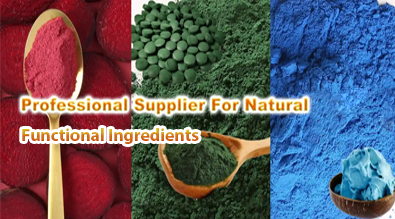
Who we are
